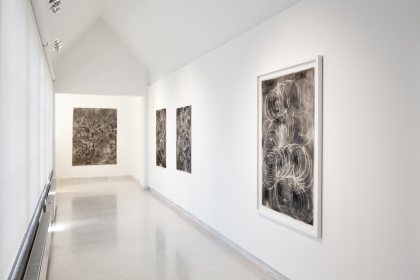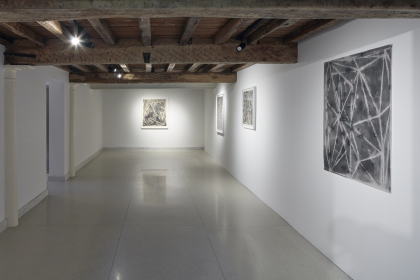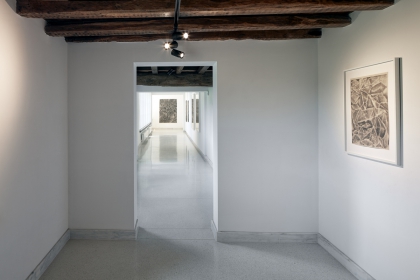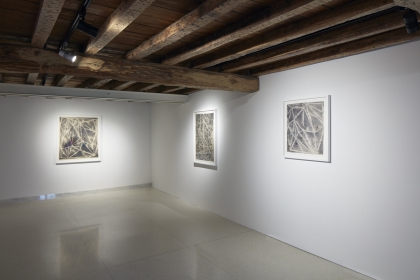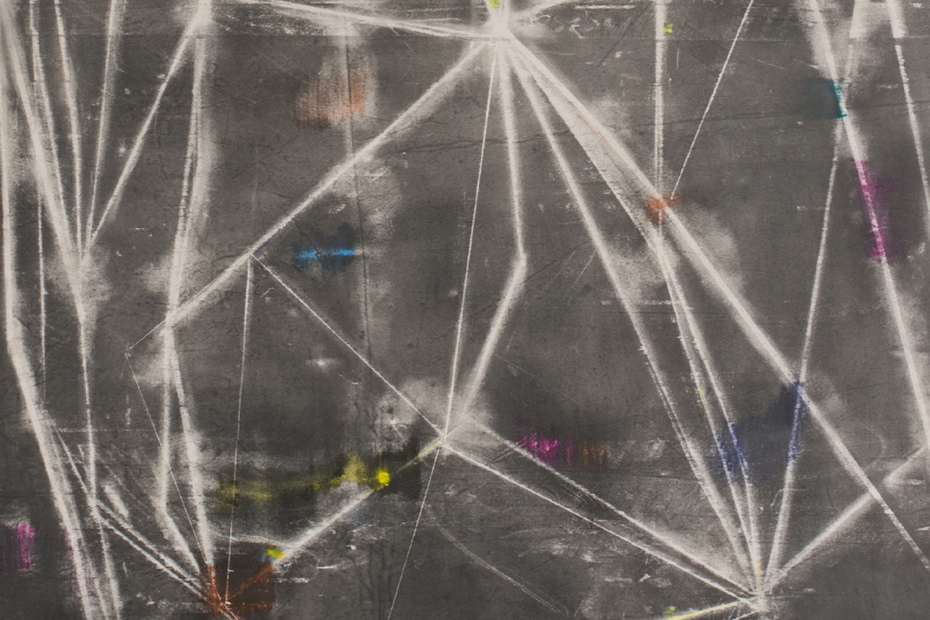
Voice in the wilderness
What if art is about adding, inventing, completing and creating from the white page or temporarily empty musical score? What if an artist can do nothing but imagine how a motif is shaped on the virgin canvas that awaits in the studio? Hesitant and thoughtful, or quick and purposeful: images and meanings come into being. What did not exist is created, layer after layer. Something emerges. The opposite is also true. In which case, the artist subtracts the superfluous. Like the sculptor who carves a sculpture from a block of marble, or a decorator who realises a sgraffito mural: by eliminating the unnecessary, the motifs appear.
Denitsa Todorova’s (b. 1984, Plovdiv, Bulgaria) recent drawings are created in a similar fashion. She covers thin, large-format sheets of paper with a thick layer of graphite powder until the rectangular black page takes on a slightly sculptural quality. The graphite is like a layer of soil, a surface that you must approach like an archaeologist. This is exactly Todorova’s occupation, in a process that she describes as ‘digging in the structure’. Revealing the patterns requires time and patience. She removes the material, layer after layer, until fragments of the underlying paper become vaguely visible. At which point, the negative becomes positive, or vice versa. It is not immediately obvious what you are looking at. You need to work out ‘what it is’ for yourself, what it is that you perceive or experience.
Art can also be about erasing and making things disappear – every drawing is the result of a type of performance, a choreography without spectators that Todorova performs between the four walls of her Antwerp studio. Are these abstract forms that emerge? That is yet to be seen. What Todorova reveals are the shapes that you ‘see’ when you stare at the sun or press your fists into your closed eyes. You do not really see anything: it is a process of remembering and imagining. Hence the title of the exhibition, Voice in the Wilderness – a solitary individual in a dark forest will see nothing but his own thoughts and dreams. Fascinated by things that are imperceptible but exist, she highlights them on the sheet. Paper allows an artist greater freedom than a canvas. And so, between direct experience and calculated guesses, Todorova sets to work. Afterwards, she fixes the sheet that she has pinned to the wall like a butterfly, or will meticulously frame. In the concentration of the moment and duration, she creates work that withstands time.
Eric Min, 16 July 2017

